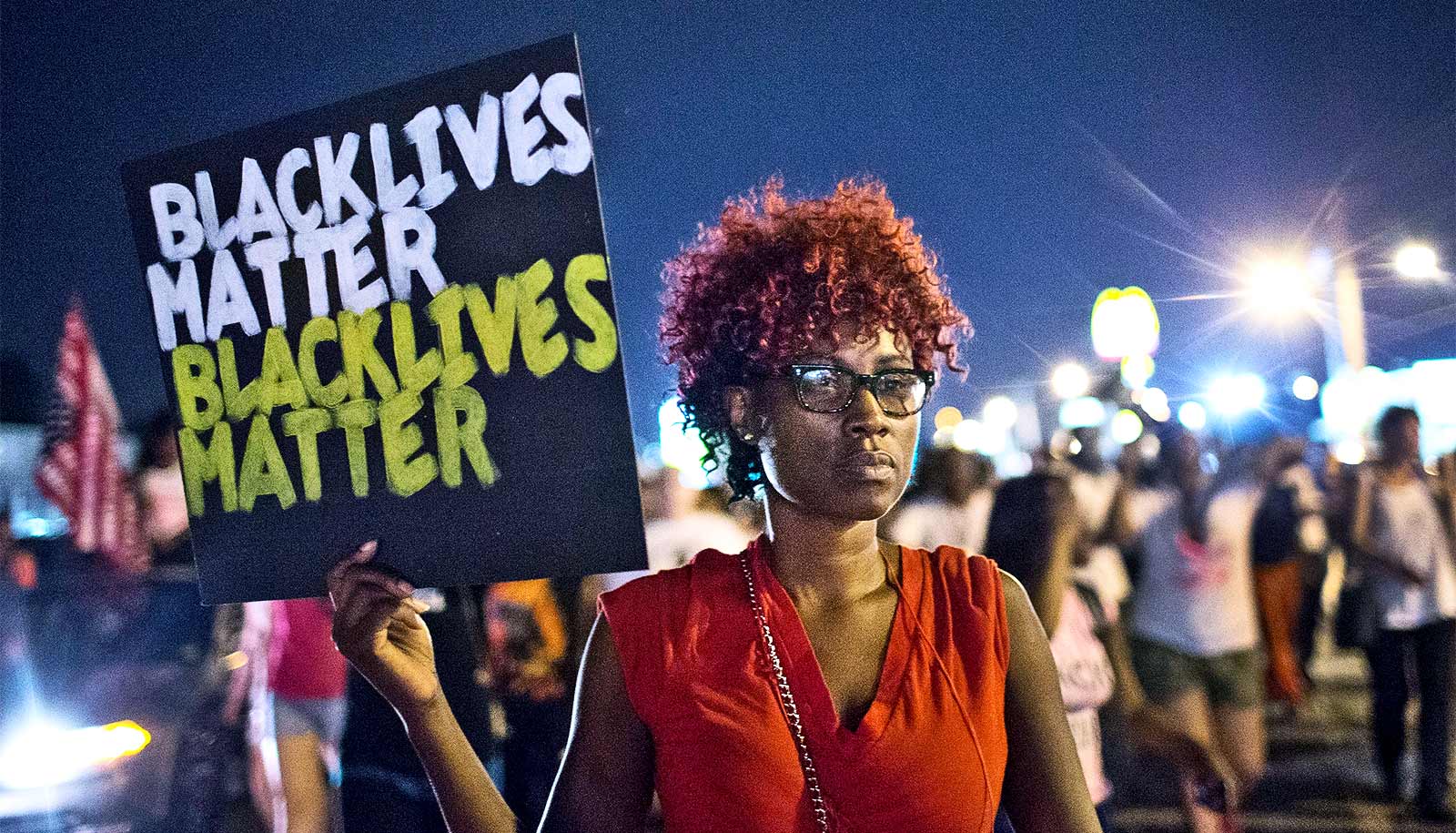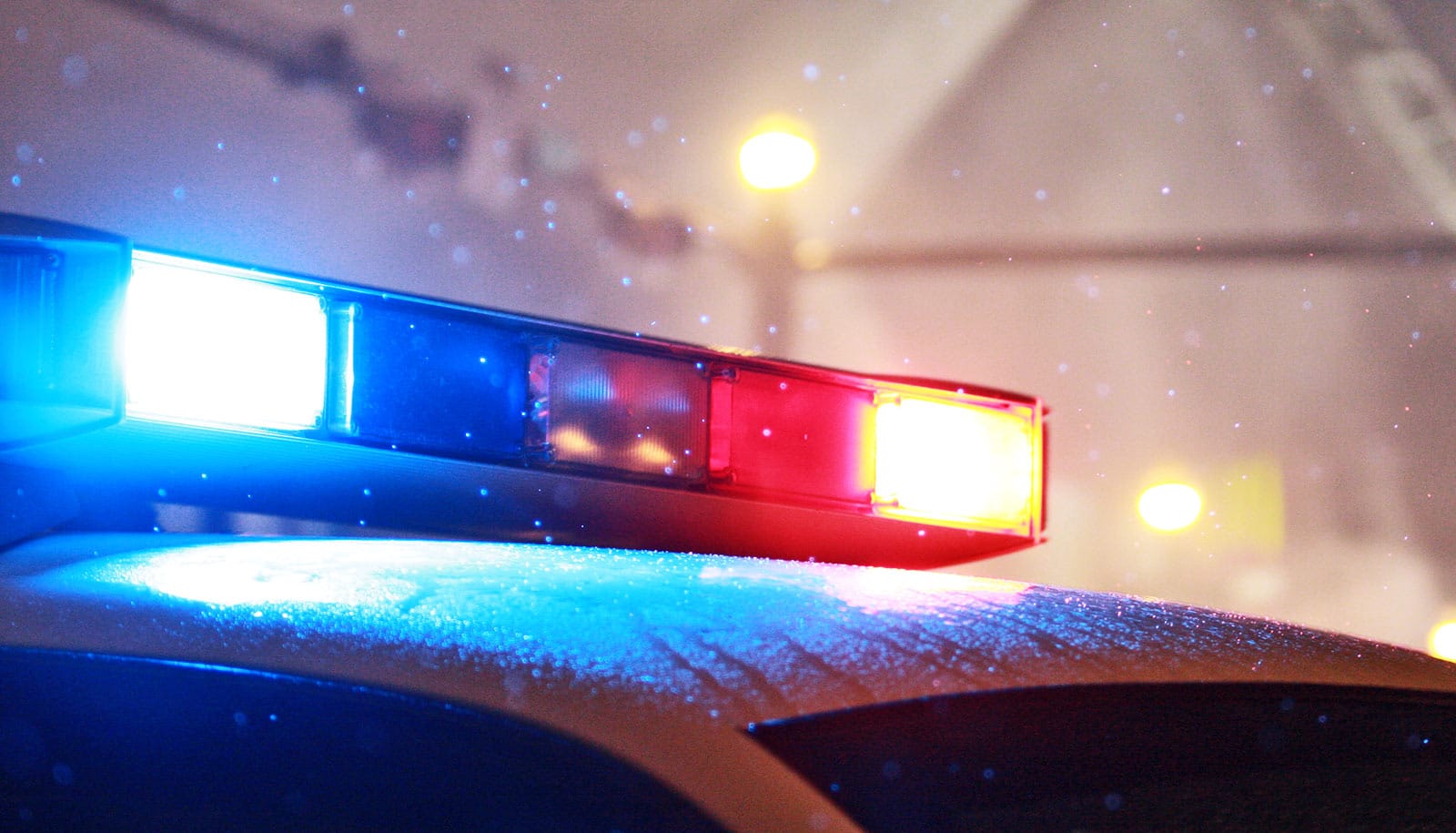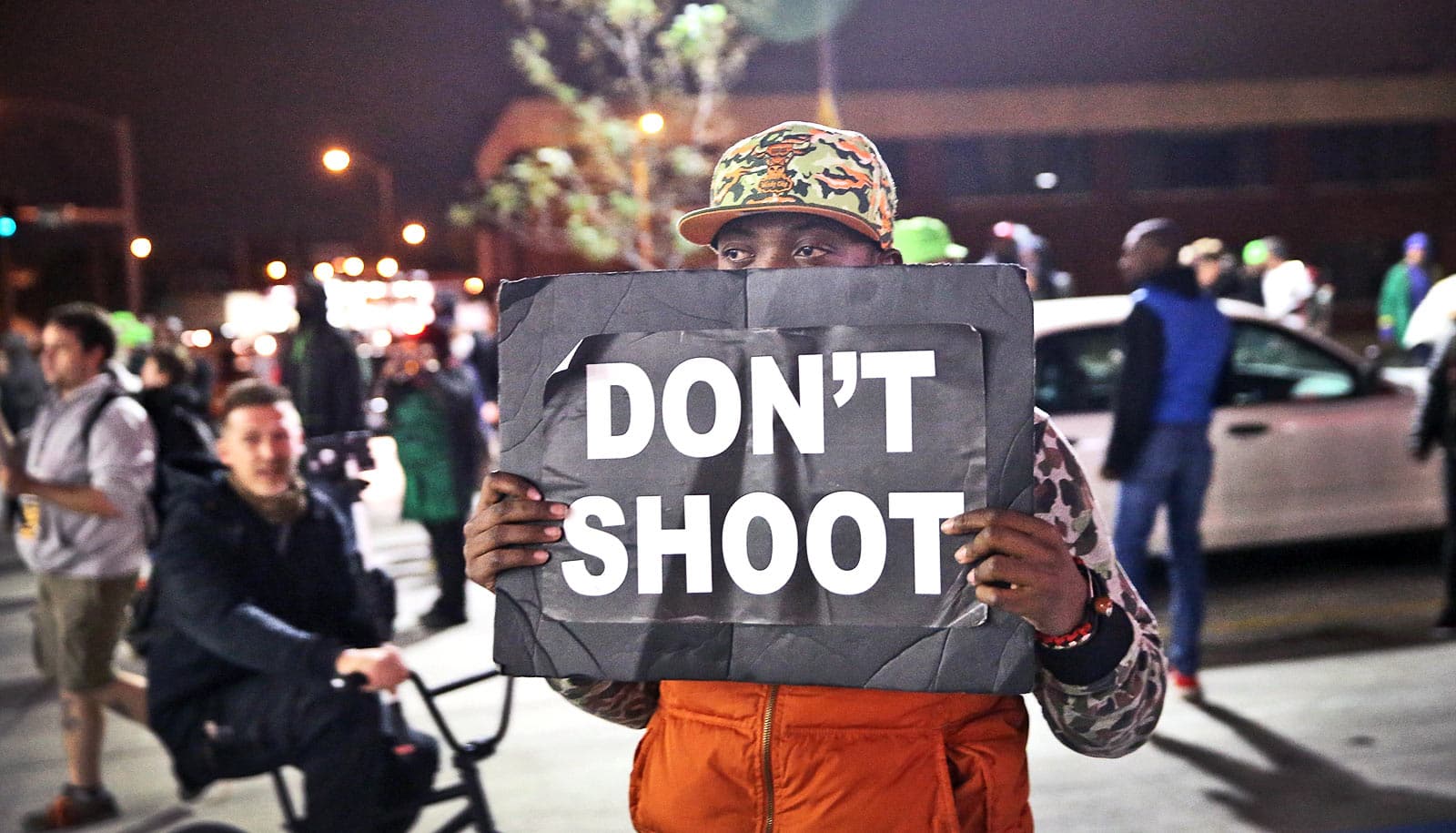A new book takes readers to the front lines of the protests in Ferguson, Missouri and Baltimore, Maryland that took place following the deaths of Michael Brown and Freddie Gray.
Jennifer Cobbina, associate professor in the School of Criminal Justice at Michigan State University, visited the two cities right after the violent 2014 and 2015 protests, and interviewed over 200 residents and protesters to learn about their experiences with and perceptions of police officers.
The firsthand accounts in Hands Up, Don’t Shoot (NYU Press, 2019) reveal how the oppressive actions by police officers—both black and white—influenced and eroded trust between law enforcement and the communities, as well as inspired action to protest in the future.
Here, Cobbina, who studies the relationship between race, crime, and policing, discusses the book and some of her findings:
What inspired you to go to these cities after the protests and explore this area of social activism?
What took me to Ferguson was that I, like many, had my eyes glued to the TV after death of Michael Brown and was fixated on police responses. I was dismayed by seeing how militarized the police responses were to protesters. During that time, I received an email from a colleague asking if I wanted to visit Ferguson and I felt very aware that history was being made.
As a researcher, I knew that I could both document history, as well as capture the voices of those feeling marginalized and oppressed.
What emotions did you feel and capture from protesters?
The day before I started Ferguson interviews, I observed a protest there on the National Day Against Police Protests because I wanted to absorb what these people were going through. Beforehand, I was told to be prepared to be arrested—which made me anxious, nervous, and second-guessing whether or not I should be there.
During the protest, I observed a line of officers in riot gear, which was so intimidating. Even if I wanted to, there was no way as a black woman that I would have approached the line of officers; the intent to create fear felt very clear.
While conducting the interviews, I could sense overwhelming uncertainty, anxiety, fear, and anger—for the residents and protesters themselves, their children, their neighbors, and community.
During the interviews, there were times someone would break down and cry because they—or someone they know—was a victim of violent policing and they had no idea what would happen in their communities. They didn’t know if they’d have to move their families in order to be safe, or if they themselves might end up the next victim of police violence.
I felt their anguish and anger and wondered to myself, “how this could be happening?”
When I was trying to talk it all out with people, it felt like a flashback to the 1960s. When the Department of Justice report came out confirming that the Baltimore and Ferguson police engaged in unconstitutional and racially biased policing, it was not surprising at all but felt like a relief because it legitimized what so many people were saying.
Did the police racial demographics of each city influence perceptions at all?
Both Baltimore and Ferguson have a history of racial and economic disparities. Both have high rates of poverty, unemployment, and female-headed-households and about two-thirds of the cities are black.
Ferguson is a suburb with about 21,000 individuals whereas Baltimore is a city with 620,000. In Ferguson, the police force was about 95% white; in Baltimore, nearly half of the force was black, and so was the police commissioner, the mayor, and state’s attorney general.
I think that this is what makes my study ideal: the racial composition of law enforcement and city leadership is vastly different in the two areas—yet perceptions were not different.
I was surprised that 25% of those in my sample had negative emotions and perceptions of black officers—mainly in Baltimore—because they had negative experiences with the officers. One respondent even said that black officers get louder and more violent than white counterparts.
Residents talked about how they thought black officers felt a new sense of power and that they took advantage of it; or, they felt the need to show white counterparts how they were able to be just as aggressive. For many, hiring more black officers doesn’t equate to having positive encounters with police.
Many people will say that diversifying police forces is a solution, but the reality is that black people can be viewed with suspicion from both white and black officers. The stereotype that black individuals are more likely to engage in criminal activity and deviant behavior is often held by both races of officers.
What were some of the other main findings?
In general, black male protesters were more likely victims of oppressive police tactics, like arrests, tear gas, rubber bullets, and verbal and physical assault. At the same time, a much smaller percentage of women were recipients of physical, mental, and verbal assault from law enforcement.
The first-time and younger protesters were more willing to be on the front lines of protests. There was a frustration among both older and younger groups that mainstream media was lumping protesters with those who engaged in looting or rioting; while the younger people didn’t necessarily agree with looting or rioting, many felt as though it was necessary to get the attention they needed, whereas elders were generally against it.
I heard a lot more from Ferguson about tear gas and rubber bullets. In Baltimore, we witnessed a city that tried to learn the lessons from Ferguson. They wanted to avoid militarization and engaged in a “soft approach” to policing by allowing people to protest. However, when things got chaotic, police came in full force.
Another main finding was discovering three different sub-groups of protesters. The first group is what I called “revolutionaries.” These were individuals who were engaging in protests nearly every day, may have skipped going to school or work, and felt like their mission in life was to engage in collective action efforts to bring attention to racial injustice. It didn’t matter what police did, they were just as—if not more—committed to engage in protests. I found that there were more revolutionary in Ferguson—they would not be deterred.
Another group, the “tourist group,” engaged in a few protests but were not as committed to activism as revolutionaries. They were less motivated to engage in future protests but rather engaged in community efforts, like mentoring and or encouraging residents to vote in an election.
The third group, “intermediaries,” continued to go to work and school but they protested several times because they believed in the cause.
What surprised you most in the interviews?
The one thing that definitely surprised me was the negative encounters people had with black officers and coming to the realization that diversifying police forces won’t necessarily solve the problem.
There was one interview—with a relative of Michael Brown—that really stood out. He was arrested multiple times, witnessed negative and repressive tactics while demonstrating, but he remains passionate and adamant about protesting police brutality.
He told me that the only way he’d stop protesting is if he himself was dead. Hearing from people who felt as though protesting was their mission in life, despite experiencing repressive police tactics, wasn’t something I expected.
There were groups of the population who felt more anger over the deaths of Michael Brown and Freddie Gray. That coupled with their negative encounters with the police drove many to protest. And the harder and more oppressive law enforcement became, the more determined revolutionary protesters were in resisting them.
What do you hope readers take away from your book?
A lot of people call for police reform that entails technology and surveillance, manpower and training for police department[s], as well as diversity training and de-escalation training in the forces. While there is some benefit to this, I don’t want people to think that these are adequate solutions to reducing violent policing.
Millions of dollars have been pumped into police departments for decades, but it has only led to greater surveillance of blacks and brown people. I argue that doubling-down on investments into the police isn’t the answer—rather, investments need to be made in marginalized communities. Money needs to be spent on prevention and intervention for at-risk youth and young adults. Dollars need to be spent on addressing mental health, substance abuse, and homelessness, as well as providing quality education and minimum-wage jobs in these areas. These are the investments that will help reduce criminalization.
It’s not about pumping more dollars toward the police force—but rather addressing the underlying structural problems that exist within these communities.
Source: Michigan State University


